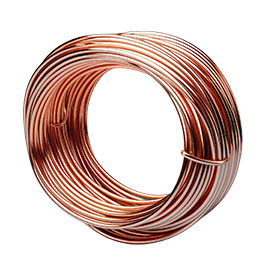
#8 gauge copper wire is a commonly used electrical conductor in various applications, from residential wiring to industrial machinery. Understanding how many amps a #8 gauge copper wire can handle is crucial for ensuring safe and efficient electrical systems. \
What is #8 Gauge Copper Wire?
The term “#8 gauge” refers to the American Wire Gauge (AWG) system, a standard for measuring the diameter of electrical conductors. In this system, a lower gauge number indicates a thicker wire. Therefore, #8 gauge copper wire is relatively thick compared to higher gauge wires, such as #12 or #14 gauge.
Copper is known for its excellent conductivity and durability, making it a preferred material for electrical wiring. The thickness of #8 gauge wire allows it to handle higher current loads compared to thinner wires, making it suitable for circuits that require a substantial amount of power.
How Many Amps Can a #8 Gauge Copper Wire Handle?
According to the National Electrical Code (NEC), #8 gauge copper wire can safely carry up to 40 amps in standard conditions. However, this ampacity can vary depending on factors such as the temperature rating of the wire’s insulation and the installation environment. For instance, if the wire has insulation rated for higher temperatures (e.g., 90°C), it may handle up to 55 amps.
It’s important to consult the NEC and local electrical codes for specific guidelines, as these codes take into account safety factors that are crucial for preventing electrical hazards.
What Happens If Too Many Amps Go Through a #8 Gauge Copper Wire?
If a #8 gauge copper wire is forced to carry a current load that exceeds its rated ampacity, several issues can arise:
- Overheating: The most immediate risk of overloading a wire is overheating. When the current exceeds the wire’s capacity, the electrical resistance within the wire generates excess heat. This can cause the wire insulation to melt, potentially leading to short circuits, electrical fires, and damage to connected devices.
- Fire Hazard: Prolonged exposure to excessive current can increase the risk of electrical fires. Overheated wires can ignite surrounding materials, such as wood, drywall, or insulation, posing a significant safety risk.
- Equipment Damage: Overloading a wire can also result in voltage drops, which may lead to malfunction or damage to electrical equipment and appliances.
To prevent these risks, it’s crucial to select the appropriate wire size for the current load of the circuit and ensure that circuit breakers or fuses are correctly rated to interrupt the flow of excessive current.
What Happens If Too Little Amps Go Through a #8 Gauge Copper Wire?
While there is no danger in running a lower current through a #8 gauge copper wire, it may result in an inefficient use of resources. Using a wire that is much thicker than necessary can be more costly, both in terms of material cost and installation complexity. However, this is not a safety issue. In fact, using a wire that is rated for a higher current than needed can add a margin of safety to the electrical system.
For instance, if a circuit only requires 20 amps, using a #8 gauge wire (rated for 40 amps) can ensure that the wire runs cooler and has less resistance. This can be beneficial in situations where future expansion of the circuit may require higher current loads, or where additional safety is desired.
Other Relevant Information
When determining the appropriate wire gauge for a specific application, it’s essential to consider several factors beyond just the current load:
- Length of the Run: The length of the wire run can affect voltage drop. For longer runs, a thicker wire (lower gauge) may be required to maintain adequate voltage levels and prevent power loss.
- Temperature and Environment: The wire’s insulation rating and the environmental conditions (e.g., ambient temperature, exposure to moisture) can influence the wire’s ampacity. For example, wires in high-temperature environments may need to be derated to prevent overheating.
- Code Compliance: Always follow the NEC and local electrical codes when selecting wire sizes to ensure compliance with safety regulations and standards.
Conclusion
A #8 gauge copper wire can handle up to 40 amps under standard conditions, making it suitable for circuits that require moderate to high current loads. Understanding the wire’s ampacity is crucial for ensuring the safe operation of electrical systems. Overloading a #8 gauge wire can lead to overheating, potential fire hazards, and damage to equipment, while underutilizing it poses no safety risks but may result in higher installation costs.
Selecting the appropriate wire size involves considering factors such as current load, wire length, temperature, and code requirements. By carefully evaluating these factors, you can ensure a safe, efficient, and code-compliant electrical installation.

